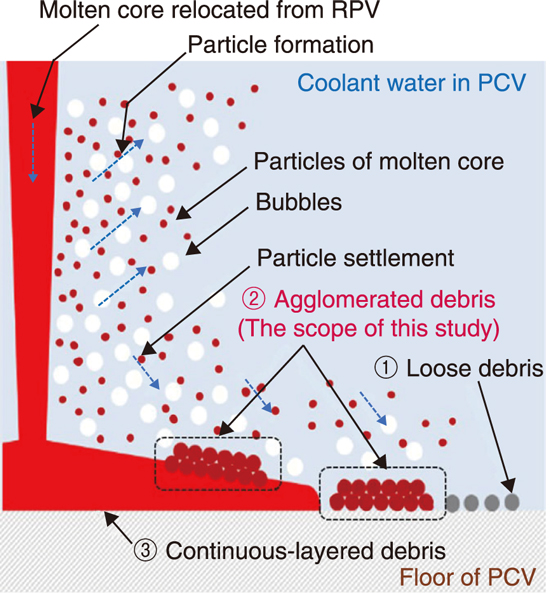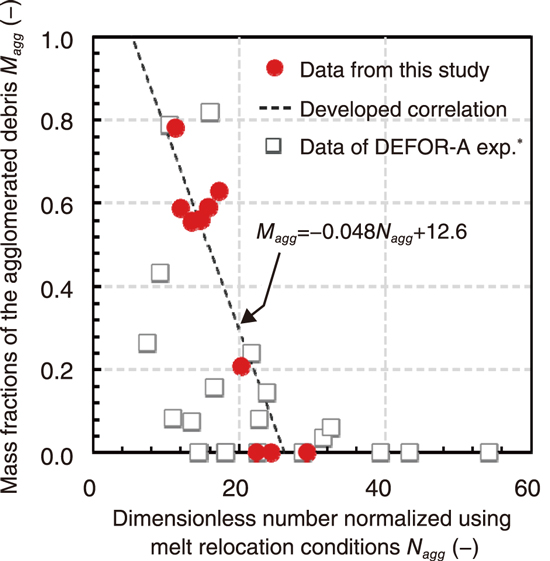
Fig.2-8 Assumed forms of settled debris in water coolant on a floor of a primary containment vessel (PCV) in a severe accident (SA)

Fig.2-9 Development of a correlation to predict mass fractions of agglomerated debris using a dimensionless number
In a severe accident (SA), high-temperature molten core (melt) can relocate in a primary containment vessel (PCV) due to rupture of a rector pressure vessel (RPV). The molten core-concrete interaction (MCCI) threatens the PCV integrity due to concrete ablation by the melt. To prevent and mitigate the MCCI, Japanese utilities have employed the strategy that injects coolant water in a PCV before rupture of the RPV. The assessment of debris coolability on the floor of a PCV is important in evaluating the effectiveness of the employed strategy.
The settled debris on a floor is supposed to show three different forms depending on melt relocation conditions (e.g., physical properties of melt, coolant water depth, melt and coolant temperatures) as shown in Fig.2-8. The loose debris settles by individual solidification of particles detached from the melt. The agglomerated debris settles by merging of particles in a liquid state with others when the particle settles. The continuous-layered debris settles by direct impingement and spreading of the melt. The debris coolability decreases due to the agglomerated or continuous-layered debris settlement because contact areas with coolant water of these debris become smaller than those of the loose debris.
To evaluate debris coolability, the mass fractions and deposition area of the settled debris need to be predicted. This study focused on the agglomerated debris and carried out the experiments of simulant melt (a low-melting-point metal) injection into coolant water. Mass fractions of the agglomerated debris in the recovered debris from the experimental apparatus were measured. The systematic changes of melt relocation conditions (i.e., coolant water depth and, melt and coolant water temperatures) clarified dominant factors on mass fractions of the agglomerated debris.
This study has developed the correlation to predict mass fraction of the agglomerated debris using the dimensionless number expressed by simple products of the melt relocation conditions (Fig.2-9). The developed correlation predicted the overall trend of mass fractions of the agglomerated debris obtained from the DEFOR-A experiments* conducted at the Royal Institute of Technology under the different melt relocation conditions using the oxide mixture as a simulant melt. The results indicate that the developed correlation is applicable to diverse melt relocation conditions.
Debris coolability to develop credible methods applicable to diverse melt relocation conditions supposed in a SA in actual reactors will be further investigated.
This study was conducted as part of collaborative research with the University of Tsukuba.
(Yuzuru Iwasawa)
* Kudinov, P. et al., Agglomeration and Size Distribution of Debris in DEFOR-A Experiments with Bi2O3-WO3 Corium Simulant Melt, Nuclear Engineering and Design, vol.263, 2013, p.284-295.